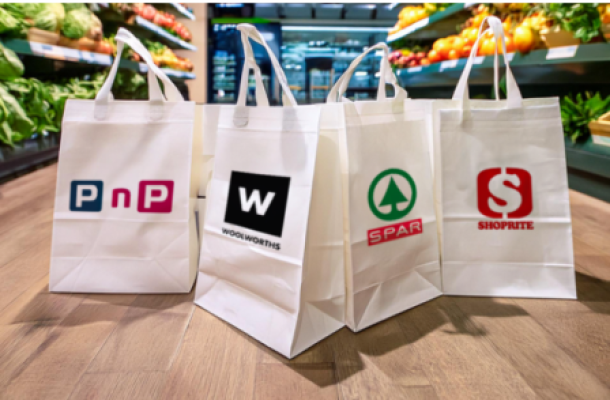South African shoppers are in love with loyalty!
South Africans it seems are loyalty mad. Proof of this is that of six Africa/Middle East countries surveyed in Nielsen’s latest Global Retail Loyalty Survey.
South Africa had the highest number of *respondents (84%) stating that that they were currently members of a loyalty programme. The significance of this figure becomes even more apparent when one considers that only 66% of global respondents were members of one or more loyalty programmes. (*The findings in the survey were based on respondents with online access in 63 countries. While an online survey methodology allows for tremendous scale and global reach, it provides a perspective on the habits of only existing internet users, not total populations. In addition, survey responses are based on claimed behaviour, rather than actual metered data.)
Nielsen Head ofEmerging Markets Thought Leadership Ailsa Wingfield says; “In Africa and the Middle East, participation in retail loyalty programmes is closely tied to the strength of modern trade. Modern trade is still in a growth phase in many countries in the region, however, the high membership rate in South Africa speaks to the relatively long history of loyalty programs and high penetration in the market.”
Bolstering this view, 62% of South African respondents in the study revealed that they belong to between two and five schemes, while 6% said between 6 and 10 schemes. In terms of how they interact with their loyalty scheme; 82% scan their card in-store, which represents one of highest usage rates of physical loyalty cards in the world. Thirty two percent enter information or log into their account on a retailer website and 28% use the retailer’s app.
Wingfield comments; “This is yet another clear indication that an omni-channel experience is the new reality for consumers. Retailers can’t think of the online browsing and in-store buying experience as disparate activities. Loyalty programs and the engagement with members should occur holistically across brick-and-mortar and digital channels during the entire path to purchase, not just at check out.”
Wingfield adds that as adoption of non-traditional payment methods rises, loyalty programs also need to be flexible in terms of payment type. “Mobile payment platforms will increasingly deliver an opportunity for loyalty-program engagement with consumers, providing a convenient and personalized way for program members and retailers to engage with one another all along the path to purchase.”
Money matters
Interestingly, monetary rewards are more highly valued in South Africa than in the rest of the countries in the region. Nearly seven in 10 South African loyalty-program participants say rebates or cash back (69%) or product discounts (67%) are among their top three rewards - response rates that are 24 and 16 percentage points above the global average, respectively. Free products also score highly amongst South African respondents (43%).
In stark contrast, non-money motivators did not score highly amongst South Africans, with recognition as a valued customer at 14%, frequent flyer points at 9%, charitable donation at 8% and higher priority service at just 5%. “In the markets where modern-trade penetration is lower, loyalty-program members tend to be more affluent and more willing to give back to those in need,” explains Wingfield.
In terms of their agreement with the following statements, the highest number of Africa/Middle East respondents came from South Africa (76%) who stated that loyalty programmes are more likely to make them continue to do business with a company, while 67% said they only join loyalty programmes to get free products or discounts. Loyalty programmes also create competitive advantage by reducing customers’ likelihood to switch stores and 67% said that all things being equal, they will buy from a retailer with a loyalty programme over one without.
Data wins minds
Looking to the future Nielsen Catalina Solutions vice president, Retail Relations Russell Mackey commented in the study; “The retail loyalty programs of the future will be precise, personal, and geared to what consumers really want. We think about loyalty programs as personalised because they appear to be relevant to the shopper, but many retailers haven’t even scratched the surface when it comes to realising their full potential.
“Big data (in conjunction with technology) and various relationships and collaborations that allow retailers to offer individualized deals based on a customer’s buying habits and purchase history will enable loyalty programs that are highly tailored to individual shoppers.”
To achieve this kind of success the report also listed key strategies for success:
- Measure and monitor performance -Loyalty program data must be tools for retailer learning as the importance of data cannot be overstated and will only continue to grow. The future lies in integration i.e. combining granular, internal loyalty data with rich contextual media and market data to make more insightful decisions.
- Use segmentation tools -Understand which consumer groups loyalty programs really matter to and why. The execution of any loyalty program should allow for personalization and dynamic learning, but the initial design should be geared toward serving the consumers whose behaviour will be most influenced, and a segmentation analysis will help identify those consumers.
- Personalise the shopping experience -Winning loyalty programs understand that every customer is an individual and that success comes from giving customers what they want, not what the retailer wants. Program offers that are unique to the shopping habits of each consumer can not only drive brand affinity, but they can also send a signal to the customer that they are valued patrons.

News Category
- International retailers
- On the move
- Awards and achievements
- Legislation
- Wine and liquor
- Africa
- Going green
- Supplier news
- Research tools
- Retailer trading results
- Supply chain
- Innovation and technology
- Economic factors
- Crime and security
- Store Openings
- Marketing and Promotions
- Social Responsibility
- Brand Press Office
Related Articles

Checkers Sixty60 wipes floor with Pick n Pay As...

Top tips for consumers to combat escalating ele...

Clear winner in South African retail battle

Drinks survey reveals Rooibos as a top choice a...


